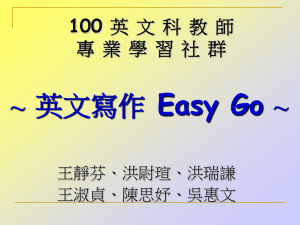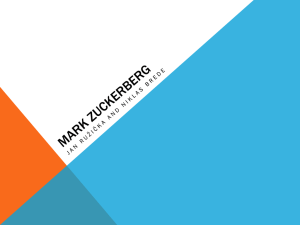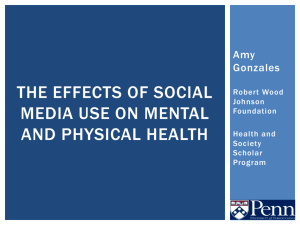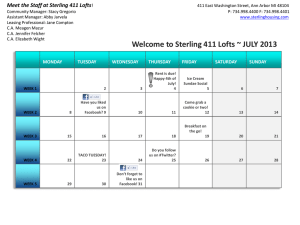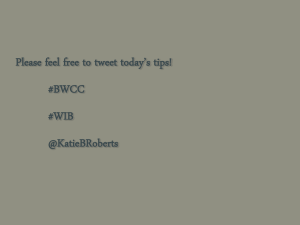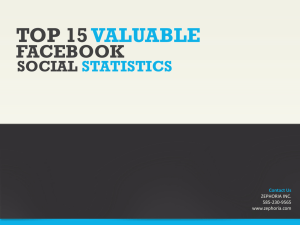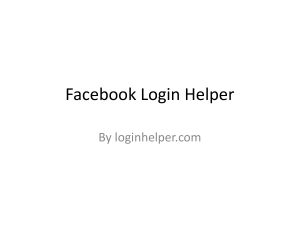HU3840TechnologiesatWorkInterviewReport
advertisement
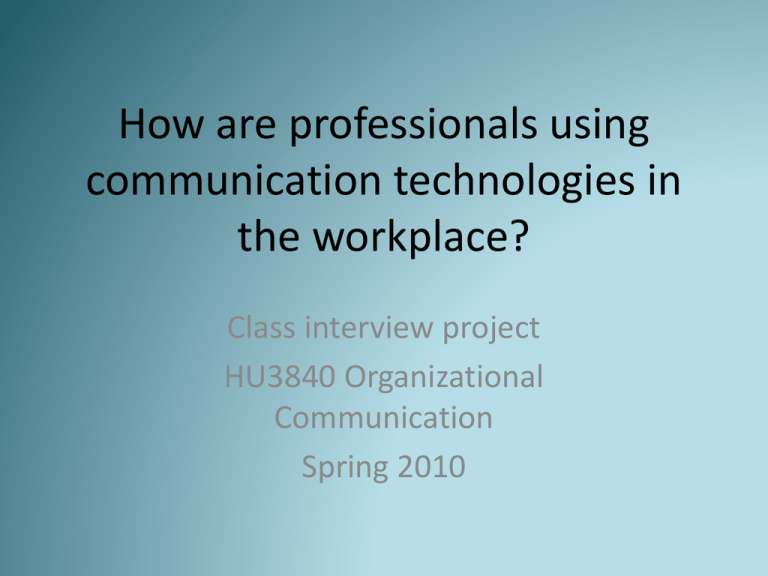
How are professionals using communication technologies in the workplace? Class interview project HU3840 Organizational Communication Spring 2010 Interview Guidelines • Defining a professional – Salaried employee or licensed contractor – Position requires specialized education – Works in a designated workplace – Communication is central to the job • 30-minute interview – Class questions – Questions specific to group’s topic – Informed consent Class Questions • Which technologies do you use to communicate in your workplace? – Please walk me through a typical day’s communication activities. • How have communication technologies affected… – The types of work you do? – Your workload ? • How have communication technologies changed from the time you started in this field? Was there initial resistance to the communication changes? – How have these changes affected your work experience? • Are there any specific technologies your office plans to incorporate in the near future? Group Topics • • • • • • • • Facebook at work Effects on collaboration and mobility Restrictions on usage in the medical office Blackberry addiction? New and old technologies: hinder or help? Supervisory uses Effects on face-to-face interactions Personal and professional risks of usage Participants • 24 professionals interviewed – 4 Medical – 7 Academic – 11 Other • Positions – Managers, directors, supervisors – Most had specialized careers – All had advanced education and/or experience Communication Technologies Most Often in Use • Most frequently identified: Email & cell phones – Also ftf, landlines, regular mail, fax, collaboration tools • Identified by 1-3 participants – 2-way radio, IM, meeting software Most Used: Email • Pro’s – Facilitates interaction • Difficult co-workers • Professional collaborators • Intimidating others (“big-wigs”) – Organizes and documents messages • Con’s – Email never closes or goes home at the end of the day (“It’s like you’re always working”) Effects on Work and Workloads • Email has become “work”: reading, responding, organizing, forwarding • More multi-tasking • E-recordkeeping in the medical office – Patient files – Filing Insurance Claims – Internal Electronic IM Notification System – Email Prescriptions • Phones and email enhance travelers’ mobility and access – Hazards of driving and cell phone use • Improves scheduling and meetings Confirmation for Rich/Lean Media Model • Participants report that types of communication differ with importance or size – Large and important tasks are generally discussed in person – Mediocre tasks are delivered via memos or email but rarely in person • Final decisions are conducted in personal meetings Observed Changes Over Time • Spatial shifts: beyond location toward virtual – Facilitating more interpersonal communication and collaboration across long distances • Video conferencing; Google Docs/Wave; Drupal • Time shifts: immediacy, urgency – Email facilitates quick response – Online info transfer is faster • Online gossip can out-pace a formal response that must go through the chain-of-command • Media shifts: from snail mail to email to i-options – Email is widely used but is beginning to be phased out – Increase in smart phones, itouch, IM, social networking Resistance to Change? • Two-thirds reported little resistance – Uneven reception and adoption (“at their own pace”) • One-third reported problems – IM and email as distractions/Inappropriate use – Changes not as accepted by older coworkers – Resistance to availability outside office – Learning curve and compatibility issues with collaboration and work-process software systems Anticipated Changes • Enhanced video conferencing capabilities • Standardizing software systems across a national company • Text-messaging to publicize events • Moving to “paperless” offices • Sharing information – Google Docs – Drupal • Using iphones for IM and intranet access Ftf and Work Relationships • Ftf enhances workplace efficiencies – People that work together tend to have closer human to human relationships • Most participants report regular ftf meetings – People who communicate electronically don’t share the same closeness • Electronic media increase informality and decrease face time – Social networking, IM – One participant warned of “faceless people departments” because so much communication is online and personal connections and skills are becoming obsolete Facebook • Participants started using Facebook due to workplace pressure – An informal substitute for email – Professional accounts are often separate from personal accounts – Many organizations now have Facebook pages • Impact on work relationships – Participants make an effort to treat co-workers the same after viewing co-workers’ Facebook profile – Some participants mention actively separating themselves from coworkers after seeing compromising content • Overall participants agreed that it would be difficult to effectively do their job without Facebook Research on Facebook Use • 50% of Americans use Facebook • Workers who browse Facebook saw a 9% increase in productivity • 20% of companies check prospective job candidates’ profiles – 10% of companies say that they plan to check prospective job candidates profiles • 43% of companies worldwide say they have banned Facebook in the workplace Reported Regulations on Personal Use • Personal calls and internet use – Restricted for some, especially lower-level employees • Specific prohibitions regarding: • • • • • Pornography Facebook Shopping Chain Letters Religious, Political, or Racist messages Blackberry Use Pro’s • Increases flexibility • Increases convenience • Facilitates prioritizing • Increases efficiency • Simplifies messages • Increases productivity Con’s • 24/7 availability • Blurs life boundaries • Increases stress • Increases workload • Limited wireless service • Limited applications The Work Day Is No Longer 9 to 5 • Work and home being phased together due to communication technology – Participants are almost constantly available for contact by clients, co-workers, or employees – One participant noted a “fuzzy barrier between work time and personal time”; another said, “I think people work 24-7.” – Most participants seemed to find email, cell phone, and IM contact with work necessary during off-work hours. What’s Old? What’s New?* • Old: Email, fax, landline phones, beepers – These are still present – Written documents retain bureaucratic and legal importance • New: Text messaging, smart phones • Often overlooked: computers – Technology transparency: Has this technology become so familiar and integrated into our lives that we fail to recognize it as mediating communication? A paradox? • Utopian view: Most professionals see technological changes as ultimately beneficial for tasks and relationships • Endorsing the urgent organization: more and faster communication connections; multi-tasking; transparency in supplier and customer interactions • Negative impacts: Most professionals also reported negative effects • Technologies themselves add work; work/life out of balance; creates professional and personal risks Future Research • Communication technologies as work in themselves? • Communication technologies blurring work life and personal life—how much is too much? • Communication technologies and multitasking: how does this shape work processes and relationships? • Differences between professionals and nonprofessionals in communication technology uses? • Social networking technologies: what do these add to workplace cultures and communication?

